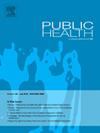Appraisal of World Health Organization guidelines for priority infectious diseases with potential to cause public health emergencies
IF 3.9
3区 医学
Q1 PUBLIC, ENVIRONMENTAL & OCCUPATIONAL HEALTH
引用次数: 0
Abstract
Objectives
To map and assess the quality of guidelines developed by or in partnership with the WHO on infectious diseases with a high risk of causing public health emergencies.
Study design
Cross-sectional audit study.
Methods
A search of the WHO website and MAGICapp was conducted to identify guidelines on treatment, management, diagnosis, prevention, and surveillance of the WHO's priority list of diseases. When these sources yielded no results, the AI search engine Perplexity was used to expand the search for locally developed WHO partner guidelines. Eligible guidelines were evaluated by three to four appraisers using the Appraisal of Guidelines for Research and Evaluation (AGREE II).
Results
Of the thirty-three guidelines assessed, 73 % were developed by the WHO and 27 % were in partnership with external organisations. Guidelines scored highest in clarity of presentation (73.71 %) but were weakest in editorial independence (26.63 %) and rigour of development (30.05 %). Thirteen guidelines (40 %) were suitable for practical use, with high scores in scope, rigour, and clarity. Fourteen (42 %) were recommended for clinical use with modifications due to insufficient rigour, stakeholder involvement, or editorial independence, whilst six (18 %) were not recommended because of significant methodological flaws. Furthermore, WHO's sole-produced guidelines had higher quality than those developed with external collaborators, except for one partnership. Moreover, no WHO guidelines were found for Crimean-Congo haemorrhagic fever, Lassa fever, Rift Valley fever, Nipah and henipaviral diseases, and SARS.
Conclusions
The rigour of development and editorial independence of WHO-supported guidelines require improvement, particularly for diseases where comprehensive guidelines are lacking.
求助全文
约1分钟内获得全文
求助全文
来源期刊

Public Health
医学-公共卫生、环境卫生与职业卫生
CiteScore
7.60
自引率
0.00%
发文量
280
审稿时长
37 days
期刊介绍:
Public Health is an international, multidisciplinary peer-reviewed journal. It publishes original papers, reviews and short reports on all aspects of the science, philosophy, and practice of public health.
 求助内容:
求助内容: 应助结果提醒方式:
应助结果提醒方式:


